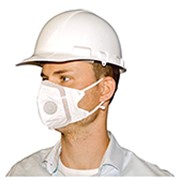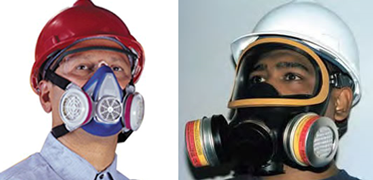
Written by: Gary Huddleston | April 2, 2020
Many feed manufacturing facilities may suddenly find it difficult to obtain N95 respirators (sometimes incorrectly referred to as N95 face masks) due to the novel coronavirus disease (COVID-19) outbreak. N95 disposable respirators are commonly used in our industry to protect the health of employees handling hazardous materials. As the country is facing a temporary shortage of this personal protective equipment, there are several things that facility managers may want to think through concerning their facility’s respirator program.
Are your employees using N95 disposable respirators only with essential tasks handling hazardous materials?
If you review the Safety Data Sheet (SDS) for the hazardous material your employees are handling and see in Section 8 (Exposure Controls/Personal Protection) a statement such as: “Minimum NIOSH approved N95 filter type dust respirators until engineering controls are implemented,” then you are required to provide a minimum of a N95-type respirator unless appropriate engineering controls are in place. Choosing the proper respirator is essential for preventing exposure to harmful contaminants in hazardous materials. N95 respirators have two straps and form a tight seal to the face.

But, if your employees are using N95 respirators for other tasks that are not related to handling a hazardous material, a single strap dust mask may be a more appropriate choice.

Have you considered engineering controls?
Good engineering controls, such as a properly installed dust collector, are a great solution to preventing employee exposure to hazardous materials. Although the initial investment is higher, engineering controls provide a good long-term solution where feasible.
Have you considered an alternative respirator?
Although disposable N95 respirators are the most commonly used respirator in our industry, there are other alternatives that might be available. Two common choices are a half-face respirator and a full-face respirator.

These types of respirators, although not disposable, offer excellent protection against exposure to hazards. They offer a tighter fitting face-piece to be used with disposable filter cartridges.
Facilities can also use a powered air-purifying respirator.

This type of respirator uses a battery-powered system to pull ambient air through a purifying device and into the user's breathing zone.
Another type of respirator that is sometimes used is a supplied-air respirator.

This type of respirator is connected to source of clean breathable air, normally an air compressor equipped with a filter and regulator panel capable of supplying grade D breathable quality air. A carbon monoxide monitor should also be a part of this type of respirator system.
Three possible disadvantages of the non-disposable types of respirators are: they are more expensive to use, equipment must be assigned to individual employees and they require more storage space.
The American Feed Industry Association has provided a number of reminders for facilities to ensure their respiratory programs are in compliance with current federal regulations. AFIA members can find that checklist on the member website.
If your facility is having immediate difficulties sourcing N95 respirators for handling hazardous material due to the COVID-19 public health emergency, contact the state authorities for where your facility is located and inform the agency of your need. If they are unable to assist, then elevate your issue to the Federal Emergency Management Agency regional office.
Comments See our policy on comments